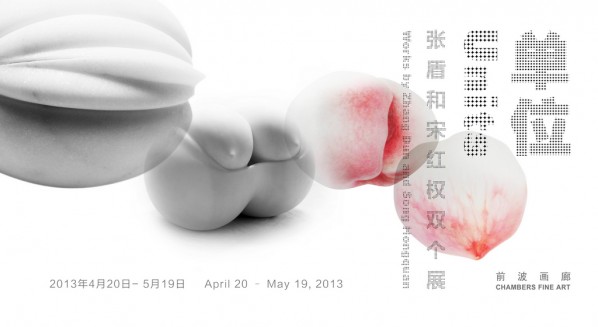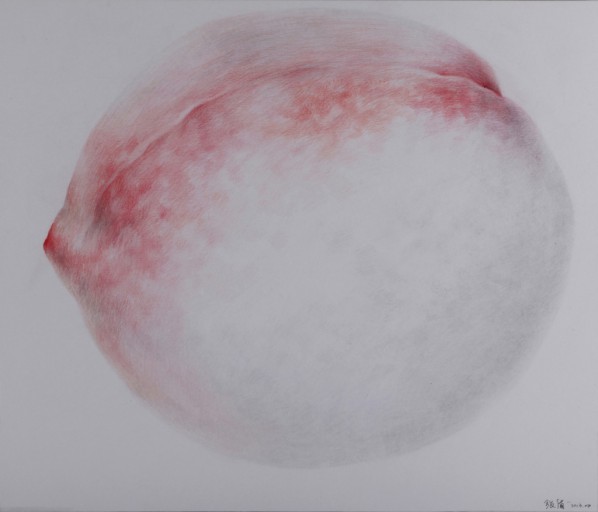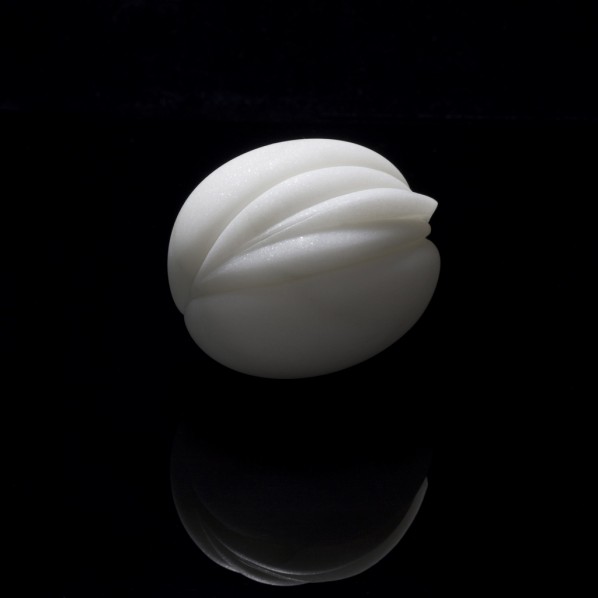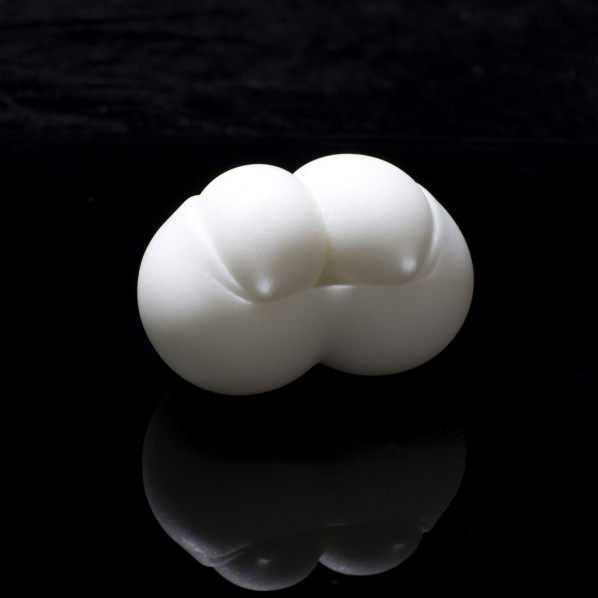
Chambers Fine Art is pleased to announce the opening on April 20, 2013 of Zhang Dun and Song Hongquan – Units. This exhibition takes the form of a dialog between drawing and sculpture, Zhang Dun’s delicate pencil drawings contrasting with the sensuous white marble sculptures of Song Hongquan. The two artists come from widely different backgrounds, Zhang Dun having grown up in the industrial environment of Shenyang and Song Hongquan in a village in Hebei, and this is clearly visible in their work. Zhang’s desolate urban landscapes, pencil drawings of remarkable refinement, contrast with the biomorphic forms of Song’s sculptures which seem at first glance to be a continuation of a tradition pioneered nearly a century ago by Jean Arp and Henry Moore.
Zhang Dun’s “units” (danwei) refer to the abandoned or neglected buildings that have been the primary theme of her oeuvre since her first exhibition at Chambers Fine Art A Difference of Opinion in 2011. Her large pencil drawings, occasionally heightened with touches of color, are noteworthy for the way in which she transforms industrial buildings of the type that can be found throughout China into haunting evocations of a world that no longer exists. From the 1990s onwards it was the destruction of the traditional architecture of Beijing that inspired many artists to document its demise. Now, in the hands of Zhang Dun, it is the massive industrial architecture of the 1950s and 1960s that occasions these elegiac reflections on this utilitarian architecture that is currently undergoing the same fate as the hutongs.

Zhang Dun, "Peach No.16"

Zhang Dun, "Tiexi District( Shenyang) No.2"
In a new series of drawings of peaches, however, executed in colored pencil, Zhang reveals sensitivity to the forms of the natural world that had hitherto not appeared in her oeuvre. Traditionally regarded as a symbol of longevity and health in China, the peach assumes monumental form in Zhang Dun’s drawings and is the sole focus of attention. The luscious peaches are simultaneously strangely disembodied and frankly erotic.
Song Hongquan’s “units” refer to the seeds, a plant’s unit of reproduction that he uses as inspiration for his sculpture. While Zhang Dun creates her visionary fruit from networks of faint pencil lines Song Hongquan discovers his unitary forms inside blocks of marble by removing everything that is not what he is looking for. The son of a noted carver, Song used the tools of a carver as the theme of his first major body of work, After the Stone Age (2011), now in the White Rabbit Collection, Sydney. Working on the land while he was still a child, Song also grew to understand the mysterious process by which a mature plant grows from a tiny seed. Although faithful to the particularities of the seeds he uses as his inspiration, the enlarged, streamlined forms that result once the sanding and polishing process is completed hover disturbingly between the botanical and the human.

Song Hongquan, "Mountain Peach"

Song Hongquan, "Lily"
About the exhibition
Dates: April 20 – May 19, 2013
Opening Reception: Saturday, April 20, 3:00 - 6:00 pm
Venue: Chambers Fine Art
Add: Red No.1-D, Caochangdi, Beijing 100015, China
Tel: + 86 (10) 5127 3298
Courtesy of the artists and Chambers Fine Art, for further information please visit www.chambersfineart.com.




























